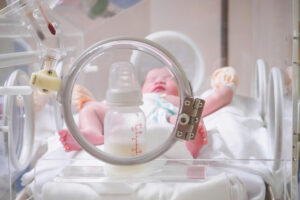Cobalt has the potential to cause serious injury. In excess, cobalt blocks cellular metabolism. This can result in damage to multiple organs. Cobaltism can occur with arthroplasty implants and result in a laundry list of health issues. Some of those health problems include deafness, blindness, cognitive decline, headaches, convulsions, fatigue, weakness, peripheral neuropathy, heart failure, and hypothyroidism. Patients with DePuy Articular Surface Replacement (ASR) hip implants (metal on metal implants) are finding those dangers to be all too real.
The case reports provided in the Journal of Bone and Joint Surgery detail the health problems experienced by two patients who underwent metal-on-metal arthroplasty, receiving the DePuy ASR hip implants. The patients, after receiving the implants, experienced severe health issues such as pain at rest, hip creaking, hand tremors, incoordination, cognitive decline, depression, vertigo, optic nerve atrophy, rashes and hearing loss. Metallosis was noted in the cases of both patients. Metallosis occurs when the metal-on-metal movement of the hip implant causes friction and releases potentially dangerous levels of chromium and cobalt ions into the body. Both patients also required revision surgery. They did demonstrate some improvement after that revision surgery.
Clearly, the severe health issues associated with cobaltism should not be taken lightly. According to the case reports, patients with metal-on-metal hip implants who are at the highest risk for cobaltism, are those with shell malposition or persistent hip pain, those with renal impairment and those with ASR implants. While the reports demonstrated that the high serum cobalt levels found in some patients with metal-on-metal hips, which can cause neurological or cardiage damage, can be corrected to some extent by timely revision surgery, the fact remains that these patients shouldn’t have had to face the prospect of corrective surgery at all. The health problems that have resulted from these faulty hip implants should not go unnoticed. If you have suffered some of the ailments described you have the right to seek the appropriate remedy.

A partner with Childers, Schlueter & Smith, LLC,, Brandon Smith has devoted his practice to pharmaceutical litigation, mass torts, products liability and serious personal injury. A frequent guest speaker at legal seminars all over the country—Brandon is focused on helping injured victims nationwide, however possible. Named a SuperLawyer again in 2019, he has also been called out as one of 10 Best Attorneys For Georgia by the American Institute Of Personal Injury Attorneys and a Top 100 Lawyer in Georgia by the National Trial Lawyers in 2019.










Comments for this article are closed.